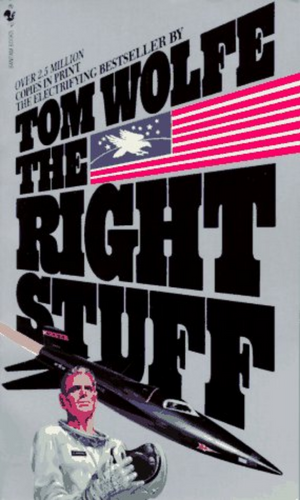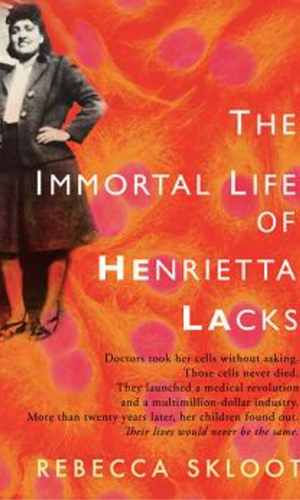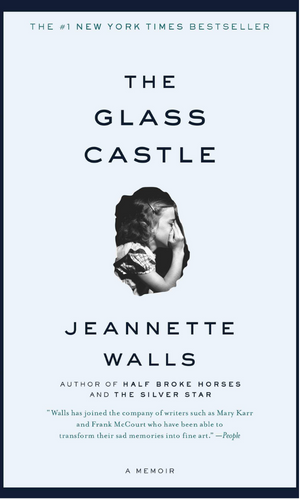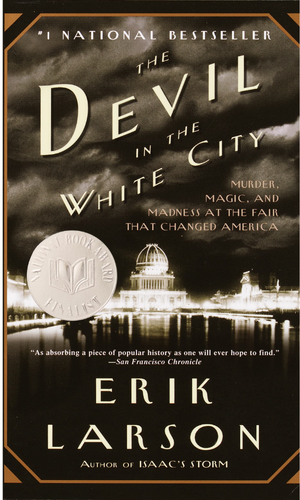Creative nonfiction is a type of writing that tells true stories through literary means. It frequently considers components of fiction, like person improvement and plot, to bring a feeling of profundity and feeling to the story. Creative nonfiction can cover a lot of different topics, like journalism, memoir, and history. It is possible to combine personal experience with historical context and research in some of the best creative nonfiction books to produce a compelling and engaging narrative. While also being entertained by a well-written narrative, these books can be a great way to learn about real events and people.
Table of Contents
“In Cold Blood” by Truman Capote

Truman Capote’s creative nonfiction book “In Cold Blood” is about the murders of the Clutter family in Holcomb, Kansas, in 1959. The investigation into the murders and, ultimately, the capture and trial of Richard “Dick” Hickock and Perry Smith are followed in the book. Capote reconstructs the events leading up to and following the murders through extensive interviews and research in the narrative style of the book. The book delves into the killers’ psychology and motives, as well as how the murders affected the small Holcomb community.
Capote became a major literary figure thanks to his groundbreaking novel “In Cold Blood,” which was written in the creative nonfiction genre. The book was a success and was adjusted into a film, a phase play, and a TV film. The term “nonfiction novel,” which is used to describe books that use fiction writing techniques to tell true stories, became popular as a result of its success as well.
“The Death and Life of Great American Cities” by Jane Jacobs

Jane Jacobs wrote the nonfiction book “The Death and Life of Great American Cities” in 1961. It is a rebuttal to the modernist approach to urban planning, which emphasized the development of massive, uniform housing developments and the division of land use into distinct zones. A more organic and human-centered approach to urban design is advocated by Jacobs, who contends that this strategy destroys cities’ vibrancy and diversity.
There are four parts to this nonfiction book, each of which looks at a different aspect of city life. The initial segment takes a gander at the significance of variety in metropolitan regions and the job that road life plays in making a feeling of the local area. The dangers of “unslumming,” or the process of gentrification and displacement that frequently occurs when neighborhoods are renovated, are discussed in the second section. The fourth section discusses the significance of cities as centers of innovation and creativity, while the third section examines the significance of mixed land use.
Jacobs uses examples from various cities around the world to illustrate her points throughout the book. She argues that neighborhoods with a mix of residential, commercial, and industrial uses are the most successful, and that cities thrive when they are made up of a variety of people and businesses. She also emphasizes the dangers of creating massive, monolithic housing developments or separating land uses into distinct zones, as well as the significance of maintaining a human-scale in city design. Overall, “The Death and Life of Great American Cities” is a thought-provoking and influential work that has had a significant impact on urban design and planning. Anyone who is interested in the future of cities and the role they play in our lives should read it.
“The Right Stuff” by Tom Wolfe

“The Secret sauce” is a true to life book by Tom Wolfe that narrates the beginning of the US’s space program, zeroing in on the Mercury 7 space explorers who were the principal Americans to fly in space. The nonfiction story of these astronauts, including John Glenn, the first American to orbit the Earth, and Chuck Yeager, the first man to break the sound barrier, is told in the book. Wolfe examines the astronauts’ diverse personalities and the difficulties they encountered while training for their missions throughout the book. Additionally, he investigates the public’s fascination with the space program and the media’s portrayal of the astronauts.
The idea of “the right stuff,” which refers to the special qualities these astronauts possessed, such as courage, determination, and the capacity to handle extreme pressure, is one of the book’s main themes. In addition, Wolfe investigates the cultural and social factors that contributed to the astronauts’ success, including their military backgrounds and the influence of the Cold War on the space race. Overall, “The Right Stuff” is a fascinating and well-researched book about the beginnings of the space program and the men who were so important to it. Anyone who is interested in American history or space exploration should read it.
“Into the Wild” by Jon Krakauer

Jon Krakauer’s creative nonfiction book “Into the Wild” is based on the true story of Christopher McCandless, a young man who made the decision to leave his privileged life and go into the wilderness. McCandless was motivated by a desire to escape modern society’s materialism and superficiality and seek meaning and purpose in a simpler, more genuine way of life.
McCandless set out on a solo journey across the country, eventually reaching Alaska, despite his lack of outdoor experience. He ran into a lot of difficulties and dangers there, like bad weather, dangerous wildlife, and a lack of resources. McCandless persevered through these challenges with determination and strength, refusing to give up on his quest for self-discovery.
In any case, eventually, McCandless’ process finished in misfortune when he kicked the bucket alone in the wild, a casualty of starvation and openness. Even though McCandless’s story ended tragically, it has encouraged a lot of people to embrace their own sense of adventure and seek out new experiences in the world around them. Krakauer delves into the reasons behind McCandless’s journey and the lessons to be learned from his tale throughout the book. Also, he delves into the larger themes of loneliness, identity, and the human need for connection and meaning. “Into the Wild” is a powerful and thought-provoking look at a man’s quest for meaning and self-discovery in a world that is often confusing and overwhelming.
“The Color of Water” by James McBride

“The Shade of Water” is a diary written by James McBride about his childhood in a multiracial family. The chapters that recount James McBride’s experiences and his mother Ruth’s memories of her own childhood form the book’s structure. Ruth immigrated to the United States as a young girl from a poor Polish-Jewish family in Poland when she was born. She wedded James McBride’s dad, Andrew, who was African American, and together they had twelve youngsters. Ruth was a loving mother who was strict but also taught her children the value of education and hard work.
James struggled with his biracial identity as a child and frequently felt out of place in both the black and white communities. Ruth, on the other hand, encouraged him to accept his distinctive background and choose his own path in life. Ruth discusses her own upbringing and the difficulties she encountered as a Jewish immigrant in the United States throughout the book. She discusses her eventual conversion to Christianity and the difficult relationship she had with her parents. “The Color of Water” is a powerful and moving look at family, race, and identity. It is a touching ode to Ruth’s endurance and strength, as well as a reminder of the lasting power of love and acceptance.
“The Things They Carried” by Tim O’Brien

Tim O’Brien’s collection of interconnected short stories about soldiers fighting in the Vietnam War is titled “The Things They Carried.” The characters’ emotional and physical baggage from their time in Vietnam are the focus of the stories. The stories in this creative nonfiction book are told in a non-linear way, switching between the soldiers’ experiences in Vietnam and their lives before and after the war.
The various items that soldiers carry on the battlefield, such as weapons, supplies, and personal belongings, are the subject of the title. However, they also carry their wartime memories, anxieties, and experiences. The stories look at how soldiers deal with the psychological toll of combat and how the war affected their mental health. The book’s main theme is the blurring of fact and fiction in the stories, which frequently combine fact and imagination.
The narrator, Tim O’Brien, is a fictionalized version of the author, and the stories frequently blur the line between what the soldiers wished had happened and what actually occurred. Also, “The Things They Carried” is an effective investigation of the human cost of war and its lasting impact on those who participate in it. It is a moving and poignant tribute to the soldiers who fought in Vietnam and serves as a reminder of the hardships they endured.
“The Immortal Life of Henrietta Lacks” by Rebecca Skloot

Rebecca Skloot’s nonfiction book, “The Immortal Life of Henrietta Lacks,” is about a woman whose cells were taken without her consent and used in scientific research. The book investigates the moral issues encompassing the utilization of Needs’ cells, as well as the effect it had on her family and established researchers.
Midway through the 1900s, Henrietta Lacks was a poor black tobacco farmer. She received treatment for cervical cancer at Johns Hopkins Hospital in Baltimore in 1951. Without her knowledge or consent, doctors took a sample of her cancerous cells during her treatment. The HeLa cell line of these cells was discovered to be immortal, which means that they could divide and reproduce indefinitely. Numerous medical breakthroughs, including the creation of the polio vaccine and the comprehension of cancer and AIDS, were made possible by the HeLa cell line, which evolved into a valuable resource for scientific research.
However, the existence of the cells did not become known to Lacks and her family until many decades later. They were shocked and upset because they had never given their permission to use the cells and had not been compensated for their use. The book by Skloot looks at the ethical issues surrounding the use of Lacks’ cells, such as obtaining informed consent, exploiting the underprivileged and marginalized, and the possibility of making money.
The HeLa cell line had an impact not only on the scientific community but also on Lacks’ family. Skloot gives a nuanced and complex look at the scientific and ethical implications of the HeLa cell line through interviews with Lacks’ family and researchers. In general, “The Immortal Life of Henrietta Lacks” is an insightful and moving look at science, ethics, and the impact that scientific discovery has on people.
“The Glass Castle” by Jeannette Walls

The unconventional upbringing of Jeannette Walls by her highly unconventional parents is chronicled in her memoir, “The Glass Castle.” The story follows Jeannette and her siblings as they move around strangers to get by. They live in poverty and move around a lot. Rose Mary, Jeannette’s mother, is an artist and dreamer who prioritizes her own interests over providing for her children. Rex, her father, is an intelligent and charismatic man who frequently drinks and cannot work. Jeannette and her siblings cherish their parents despite their flaws and make an effort to make the most of their difficult circumstances.
Jeannette becomes increasingly enraged with her parents’ inability to meet their basic needs as she gets older and begins to question their actions. Jeannette eventually comes to terms with her difficult childhood and learns to forgive her parents despite their turbulent relationship. The memoir “The Glass Castle” is a moving look at family, perseverance, and the significance of forgiving others. Anyone who is interested in unconventional parenting or overcoming difficult circumstances should read it.
“The Power of Now” by Eckhart Tolle

Eckhart Tolle’s spiritual guidebook “The Power of Now” aims to help readers find happiness and peace in the now. The book encourages readers to focus on the now rather than their ego-driven worries and thoughts about the past or future. Because it enables us to let go of the mental noise and negative emotions that frequently plague us, Tolle contends that living in the present moment is the key to unlocking inner peace and happiness. Additionally, he emphasizes the significance of mindfulness and self-awareness and urges readers to cultivate a sense of awareness and presence in their everyday lives.
The book discusses the ego, suffering, and enlightenment, and it provides readers with practical strategies and exercises to help them cultivate a sense of contentment and peace in their lives. It has become a popular choice for people who are looking for spiritual guidance and ways to improve themselves because of its simplicity and clarity. Also, “The Power of Now” is a provocative and illuminating read that offers commonsense exhortation and procedures for developing inward harmony and bliss right now. Anyone who wants to live a life that is more fulfilling and improves their spiritual well-being should read it.
“The Devil in the White City” by Erik Larson

Erik Larson’s nonfiction book, “The Devil in the White City,” is based on the true story of the serial killer who took advantage of the World’s Fair in Chicago in 1893. There are two main characters in the book: H.H. Holmes, a charming and charismatic doctor who used the World’s Fair as a cover to lure and murder young women, and Daniel Burnham, the principal architect of the fair.
The book brings Burnham and Holmes’ stories together to show how the World’s Fair brought about significant technological and cultural advancements as well as the shadowy side of the city’s criminal underworld. In order to bring the fair to fruition, Burnham must overcome numerous obstacles, including financial difficulties, political conflicts, and the pressure to surpass the previous World’s Fair in Paris.
In the meantime, Holmes entices victims to his “murder castle,” a hotel he built specifically for the purpose of killing and disposing of bodies. He does this by using his charm and intelligence. He is eventually apprehended and found guilty of several murders, but the extent of his crimes is still a mystery to this day. The thrilling and enthralling novel “The Devil in the White City” combines elements of the supernatural, history, and crime. Fans of historical nonfiction and true crime should read it.
Conclusion
These books all grandstand the force of imaginative genuineness to recount convincing and provocative stories while additionally remaining grounded in reality. Whether you’re keen on private diaries, insightful news-casting, or verifiable records, these books make certain to give an enrapturing read.

[…] Top 10 Best Creative Nonfiction Books […]
Your point of view caught my eye and was very interesting. Thanks. I have a question for you. https://accounts.binance.com/cs/register?ref=B4EPR6J0